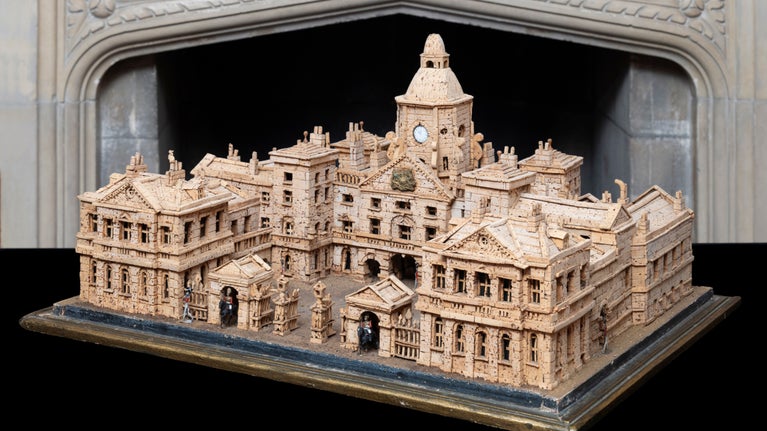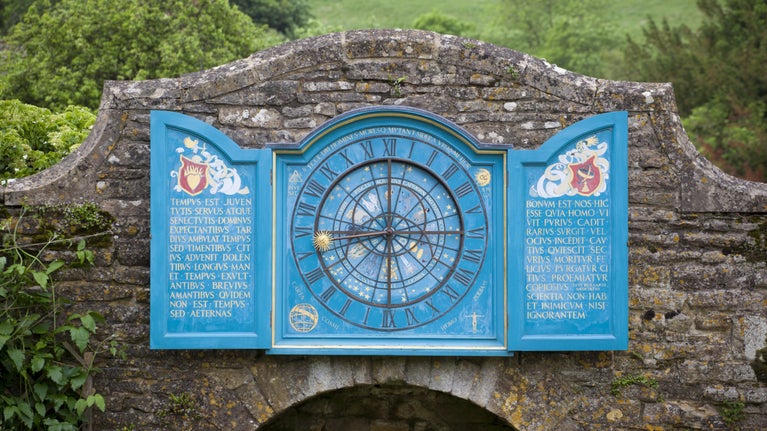
Art and collections
We care for one of the world's largest and most significant collections of art and heritage objects. Explore the highlights, our latest major exhibitions, curatorial research and more.

Many of the historic houses in our care have intriguing objects with connections to magic, mystery or death. From witch bottles to death masks and a boat made of bones, discover some of the mysterious objects in our collections.
Tucked away at the top of Snowshill Manor in Gloucestershire is a secret room which is closed to the public, called the Witch's Garret. Charles Paget Wade decorated this room with a ceremonial magic circle on the floor and adorned the walls with images of male and female mandrakes, a plant closely associated with witchcraft and alchemy.

Wade collected many mysterious objects, including armillary spheres, witch bottles and a magician’s chest. He also designed unusual clocks, including the Nychthemeron, a 24-hour clock that features astrological and zodiac symbols, and the Unicorn clock – named after the Unicorn room at Snowshill, it features images from a Tarot pack of playing cards.
Discover objects which tell tales of witchcraft and potions, from ancient Greece to Harry Potter.
From curious models made of bone to quirky tobacco holders, these are just some of the unusual items in our collections.
Explore the more morbid objects in our collection, including a coffin-shaped snuffbox and an allegory of death.
In the days before photography, death masks were a way of creating a lasting, accurate likeness of a person. Wax or plaster would be spread onto the face of the corpse and left to harden. The resulting mould could then be used to cast multiple impressions of the face, such as the pewter version of Sir Isaac Newton’s visage hanging on the Study wall at Woolsthorpe Manor in Lincolnshire.

Throughout history people have often looked for ways to control or prevent misfortunes and catastrophe, and events which we might now pass off as just part of life were frequently blamed on the forces of evil. Individuals or groups of people were often labelled as witches who cast spells or curses on people, property, places, crops or livestock. With belief in the powers of darkness so common, people found ingenious ways to ward off evil spirits and deeds.
A Georgian shoe was found under the floorboards at Wimpole Hall in Cambridgeshire. It's likely to have been deliberately placed there as it was common right up until the 20th century to hide shoes in walls, under floors and in chimneys. Many have been uncovered in recent years and the reason they were hidden is still debated, but one theory is that they were believed to protect against evil.
Witch bottles are jars or bottles which contained spells that would draw malevolent magic into them, preventing evil spirits from affecting peoples’ lives. A bottle with a liquid inside was found upside down in a stone boundary wall on National Trust land on the Isle of Purbeck in 1986. It's believed it was placed there to prevent disease in the cattle that grazed the field.

We care for one of the world's largest and most significant collections of art and heritage objects. Explore the highlights, our latest major exhibitions, curatorial research and more.
Learn about some of the misleading objects, paintings and architectural features in the historic houses we look after, and discover the truth behind these optical illusions.

Learn about the mysterious markings our ancestors carved into doorways, fireplaces and joists to ward off evil and protect their homes from witches and demons.

Dummy boards, also called silent companions, are life-size, flat, wooden figures. Find out why they were popular in the 17th century and where you can see them at the places we care for.
